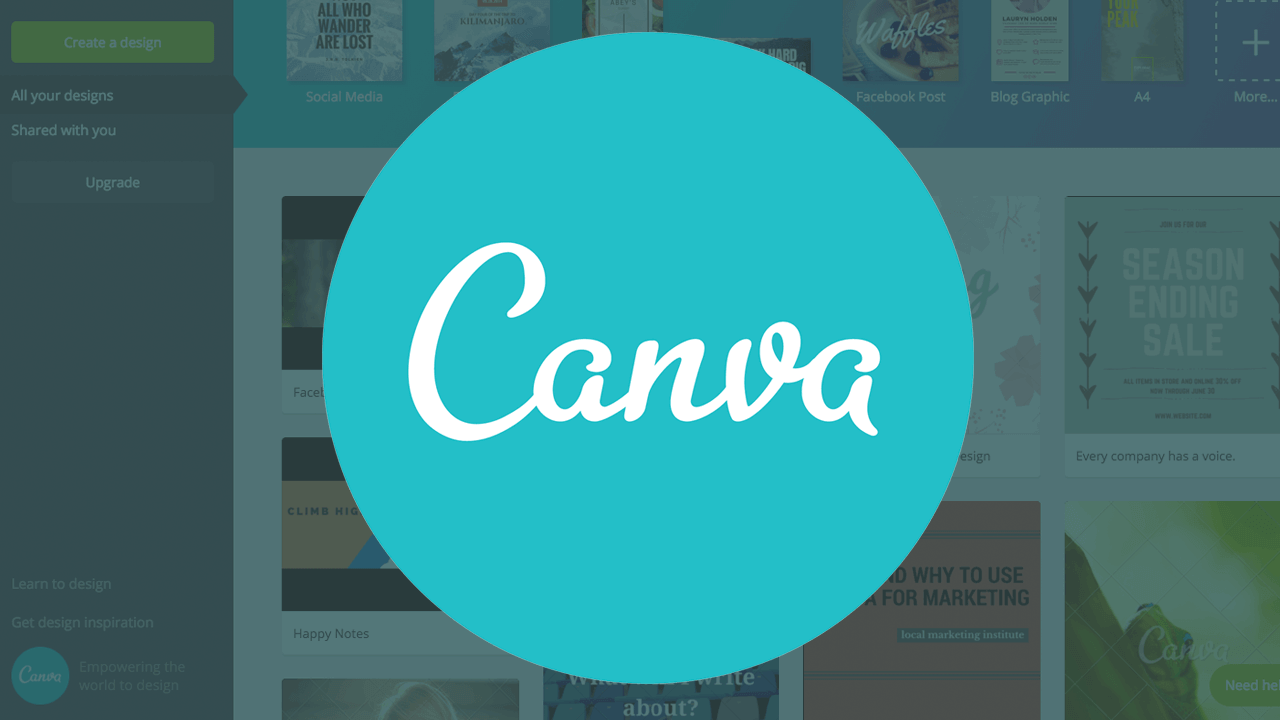The Ins and Outs of Becoming a Successful Blogger
Successful bloggers do one simple thing. They write every single day.
Like most things in life, the more you practice, the better you will become at it. As writer Jeff Goins says:
It’s not a gift; it’s a discipline.
Neil Patel reckons you should force yourself to write a blog post every day. That might seem impossible if you’re not in the habit of writing.
Once you set your mind to it, then it’s possible.
Have you heard of Parkinson’s Law?
Work expands to fill the time available for its completion.
For example:
- If you give yourself 4 hours to write a post, then you’ll take 4 hours.
- If you give yourself 2 hours to write a post, then you’ll take 2 hours.
But blogging is not just about writing. There are several parts in the process, from research to promotion.
To be successful, you need to allocate a certain amount of time to each stage.
For example, it’s easy to spend hours researching a topic, searching for the perfect article to reference, when you should limit yourself to one hour.
How much time you devote to each stage will determine if you can write a blog post every day.
To help you streamline your blogging process I’ve outlined some tips and tools for each stage.
But please remember: don’t use every tool mentioned here for every stage. Pick one that will make you more productive.
Tips and Tools to Streamline Your Blogging
Research
I divide research into two categories: indirect and direct.
Indirect
If you want to be a successful blogger, you need to keep yourself updated on the latest news and trends in your niche. Professional bloggers like Pat Flynn and Neil Patel make time to read books and blog posts. If you don’t read, then you’ll lose touch and your content will become stale.
The key is to make a note of what you learn so that you can refer to it later. Here are three tools that can help:
- Pocket lets you store web pages and tag them for easy reference.
- Evernote allows you to make notes or capture screenshots or even simplified articles, and like Pocket, you can tag items for reference.
- Feedly is useful for setting up RSS feeds to important blogs in your niche. For example, if you’re writing on SEO then you could set up feeds for Search Engine Journal, SEMRush, Backlinko, Moz, etc.
Direct
Direct research is the specific research you do when writing your blog post. Searching in Google for related articles to your topic is the most obvious choice, but here are three more:
- Google Scholar has loads of research papers and scientific studies
- BuzzSumo is a useful source to check on high sharing content
- Pinterest is “the world’s catalog of ideas” and it can provide a good source of info
Outline
After you’ve completed your research, you should have a good idea of what your blog post is going to contain.
Writing your outline helps clear your mind and give you a roadmap of where you’re going. It doesn’t have to be definitive. But you’ll find it helpful when you come to start writing.
Jot down a few sub-headings and some key points for each section so that you have a framework.
[mid_banner]
Writing
You’ve laid the foundation. Now it’s time to start building.
I recommend that you go distraction-free at this point.
No puppies and kittens on Facebook. No emails. No browsing. Just writing.
Get everything written down. The editing time comes later.
Here are five distraction-free writing tools to help you:
- Google Docs is perfect for writing web content as it gives you the essentials. Plus it autosaves to your Google Drive folder for safe-keeping.
- Hemingway App has a crisp, clean interface, and includes the basic formatting options for later on. You’ll need to switch to write mode when writing:

- ZenPen is a minimalist writing zone, where you can block out all distractions and get to what’s important; the writing.
- Calmly Writer helps you focus on writing. As you start typing, all the distracting options disappear from the interface.
Images

You know that visual content will help you get more page views and shares.
But images can become a major time-suck if you’re not careful. So it makes sense to have an image creation session and tackle them altogether.
While I’m writing, I find it easier to add a note like <image here> so I can go back afterward and add a relevant image.
When it comes to creating images you can use various tools for the different types:
- Screenshots: Try Jing or Awesome Screenshot
- Featured Image and Social Media Images: Try Canva or Pablo
- Free Stock Photos: Pixabay, Pexels, or Unsplash
Editing

Overlooking the editing stage is an easy mistake. But if you spend some quality time here, then you can make your content shine.
Often it’s best to come back to the editing stage a few hours later or even the day after.
Taking a fresh look at your blog post and cut the fluff. You’ll surprise yourself by how much you can trim from your initial ramblings.
Remember this is web content, not a mystery thriller. You need to get your points across in an entertaining and engaging way.
- Proofread
- Trim the fluff
- Tighten up the intro and conclusion
- Check that the sub-headings are enticing and informative
- Double-check that the sub-headings are the proper sizes (e.g., H2 vs. H3 vs. Bold)
- Add formatting like bold, bullet lists, and numbered lists
- Add links to your old blog posts and your external sources
- And last, but not least, use Grammarly to check your spelling and grammar
Optional: If you want to challenge yourself, then now is the time to use the Hemingway App in Edit mode. Try it and see for yourself.
SEO
SEO is not something you can treat in isolation.
But to implement basic SEO in your blog post, the Yoast SEO plugin will guide you through the necessary steps.
- Headline
- URL
- Description

Headlines

Are you wondering why I used the plural, Headlines, and not Headline.
Headlines are crucial. For many, it’s the only information they see before deciding whether to click the link to the content.
So, when you’re crafting your headline, you need to create 25-30 of them and then choose the best.
It’s what successful blogs do:
- Upworthy writes 25 headline variations
- CoSchedule writes 25-30 headline variations
- Buffer writes 25-30 headline variations
Optimizing your descriptions, eliminating thin duplicate content, improving the speed of your blog are all crucial factor to helping you rank well as well. If you’re hungry for an in-depth step by step of what to do to optimize SEO for your WordPress blog this is a pretty nice guide.
Promotion
How much time do you spend promoting your blog post?
For many people, it’s a case of hitting publish, sharing on social media a few times, and starting their next post.
But that won’t make you successful.
You need to follow a consistent method of promoting each post. The best way I’ve found is to create a checklist and work through it each time.
#1 Publish your post
The essential starting point.
#2 Email your list
These are your greatest fans so let them know your latest post is out.
#3 Post immediate social shares
Post to each of your social media accounts to get the ball rolling there.
#4 Schedule long-term social shares
Then add to Buffer (or HootSuite or whatever your preferred scheduling tool is) so that the message is repeated a few times over the coming weeks/months.
#5 Notify contacts/friends
There’s nothing wrong with pinging a mail or tweet to your mates and asking them to ‘Like and Share’ your post.
#6 Notify influencers
If you’ve mentioned a person or company in your post, then let them know about it. Drop them a mail, reference @mention in a tweet. They’ll help you spread the word.
#7 Use reciprocal sharing
Generic channels; e.g. JustRetweet, Triberr, and CoPromote.
Niche specific channels; e.g. BizSugar (Business), ManageWP (WordPress).
#8 Curate your content
There are specific social sites where you can get your content curated; e.g., WP Clipboard, Scoop.it, and Flipboard.
#9 Online Communities and Groups
Most online groups have a section where you can link to your latest post. Check out Facebook Groups and Forums relevant to your niche.
Conclusion
How much time do you spend on each of these blogging tasks?
Have you ever tried tracking your time?
Time My Life is a simple app to track your time automatically. It works in the background, so you don’t have to spend ages configuring it.
Once you have a picture of what you’re spending your time on, then you can start setting yourself targets.
Belle Beth Cooper reduced her blog writing time from 2 days to 4 hours.
Once you start managing your time and writing consistently, then you’ll master the art of becoming a successful blogger, too.
Authors Bio:
Dmitry Dragilev is the founder of JustReachOut – an easy way to pitch press yourself without the help of PR firms and Danail Donchev is a blogger at Adaptrm a kick ass blog about productivity and time management.



![What is Brand Awareness? Guide & 9 Powerful Tactics to Build It [2022]](https://brand24.com/blog/wp-content/uploads/2020/12/15-The-ultimate-guide-to-brand-awareness-1400x660x2-640x300.png)

